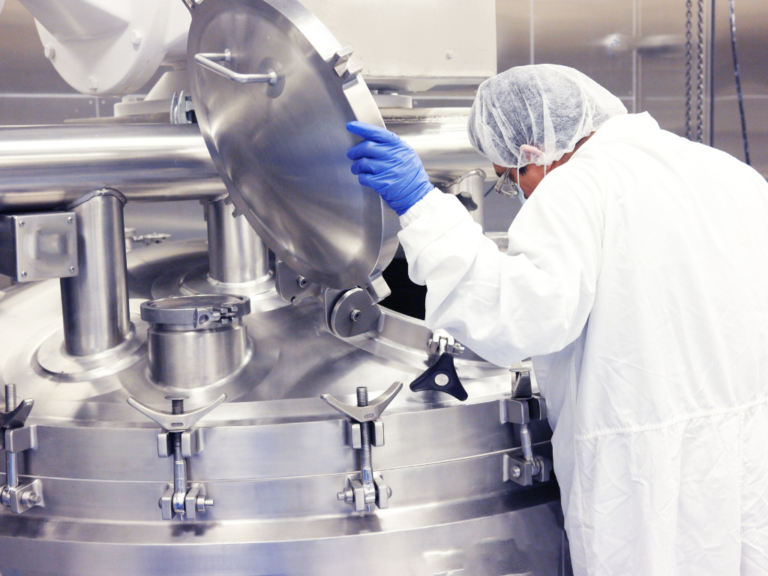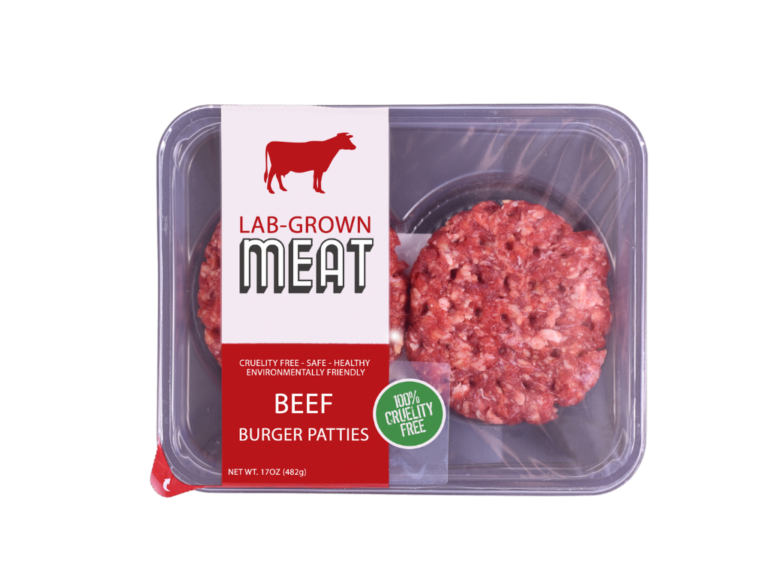How is cultivated meat made (and is it safe)?
Hungry for more alternative protein insights? Join me on my Patreon journey and become a valued member of the Alice’s Cerebrum community! By signing up

Hungry for more alternative protein insights? Join me on my Patreon journey and become a valued member of the Alice’s Cerebrum community! By signing up
No fluff, no shortcuts. Just the whole truth about how cultivated meat is made, what it’s composed of, how it stacks up against conventional meat and the immense potential it holds in tackling the pressing challenges of our global food system.
If you’re ever unsure about any of the terms that I use, make sure you check out my alternative protein glossary!
Ready?
Let’s learn how to grow meat!
Before we learn how to grow meat, we’ve got to get to know what we’ve got to grow! Let’s get into the composition of meat.
Meat is a masterpiece of muscle tissue. The succulent cuts we savour are composed of bundles of muscle fibres (also known as myocytes) that are responsible for the contractile properties that enable movement in animals. These fibres are packed with myosin and actin, proteins that give meat its juicy texture and tender bite.
But meat is more than just proteins; it’s a concoction of water, savoury fats, connective tissues and blood, all of which add further depth and complexity. To create an authentic cut of meat, therefore, we need to ensure we incorporate all of the different elements.
But, since muscle fibres make up approximately 90% of skeletal muscle (meat), that’s what I’ll be focusing on how to grow in this blog.

Okay, I’m assuming you’re probably aware by now that cultivated meat is real meat made from real-life animal cells. This naturally raises the question: where do these animal cells come from in the first place?
Currently, scientists can’t simply conjure animal cells out of thin air. They must be sourced from actual animals. The cells can be obtained through a biopsy of a living animal or extracted from the foetus of an unborn animal, a process that unfortunately results in irreversible harm. Obviously, the former option is preferable from a vegan standpoint and will certainly contribute to wider spread adoption.
What’s more, the welfare of the donor animals undergoing biopsies must also be considered if we are attempting to improve the ethics of our food system. Lea Melzener et al. devised a few scenarios that touched upon this very conundrum. But I digress, I’ll get onto this subject in another blog post!
Back to the cultivated meat process.
The specific part of the animal’s body from which the cells are taken depends on the type of meat being produced. For instance, when it comes to growing beef, biopsies from the chuck region may be preferred. On the other hand, for chicken meat production, viable cells can be obtained from feathers and eggs, meaning minimal disruption for the chickens!
As we’ve already touched upon, biopsies can include myocytes, adipocytes (fat cells), satellite cells (a type of adult stem cell), connective tissue, blood vessels, nerves and other components present within the muscle tissue.
However, for the purpose of cultivating meat, not all of these cells are required. The specific cells needed are typically satellite cells, which possess the remarkable ability to differentiate into various types of cells that make up muscle tissue. I’ll delve into the topic of stem cells in a future blog post, so stay tuned for more insights!
To isolate the satellite cells, several steps must be taken, which can include protease treatment, filtration, centrifugation and preplating. Once purified, the satellite cells are ready to grow.
Since satellite cells exhibit the ability to grow exponentially, it is advantageous to keep them in an undifferentiated state through carefully tailored culture conditions. By doing so, we can benefit from their rapid and unrestricted multiplication, ensuring an ample supply of cells to be used for the production process.
This multiplication of cells is referred to as proliferation and is typically carried out in bioreactors, which range from 1,000 to 25,000 litres. However, pushing the boundaries even further, Good Meat has made headlines by constructing colossal bioreactors with a staggering capacity of 250,000 litres, setting a new standard for large-scale cultivated meat production by providing the capacity to produce up to 30 million pounds of meat!
Bioreactors are basically big tanks that act as controlled environments. They provide optimal conditions for the growth and cultivation of living cells, allowing scientists to carefully regulate factors such as temperature, pH, oxygen levels and nutrient supply.

To ensure their successful adaptation and growth within the bioreactor, it’s crucial to introduce animal stem cells gradually. This careful process is known as cell seeding. The optimal cell density (number of cells seeded) and precise methods employed may vary, taking into account numerous factors and variables, such as the type of stem cell or the cell culture media.
Microcarriers are small particles or substrates that provide a surface for the attachment and growth of cells. They’re typically used in bioreactor systems to enable the production of a larger quantity of cells in a smaller space. I could go off on another tangent about microcarriers but, once again, I’m going to have to ask you to please be patient and watch this space for another blog!
In the same way that cells grow inside the animal, cultivated animal cells are fed with cell culture media that supply oxygen and essential nutrients including amino acids, glucose, vitamins, proteins and growth factors. This nutrient-rich broth is the fuel the cells need to multiply.
Currently, numerous research labs utilise foetal bovine serum (FBS) as a nutrient source for cultivated meat production. FBS is a byproduct of the meat industry and provides essential nutrients similar to those found within an animal’s body. However, scientists recognise that FBS is not an ideal long-term solution, not least because it defeats the object of replacing conventional meat with cultivated meat. As a result, extensive research is being conducted to explore alternative and sustainable replacements for FBS.
Many start-ups have already resolved this issue by developing their own serum-free media.
Once cells have reached desired population levels, specific changes can be made to the culture conditions to trigger differentiation. This process involves transforming stem cells into specialised cell types that constitute the various tissues found in meat. For instance, in the case of muscle satellite cells, differentiation leads to the development of skeletal muscle cells.
The differentiation process is carefully controlled by adjusting various factors including the composition of the cell culture media and environmental conditions such as oxygen levels and temperature.
And just like that, we have all the essential building blocks required to create cultivated meat!
I’d love to tell you that we could just gather up all of these differentiated cells to form an edible cut of meat but, unfortunately, it’s not always as straightforward as that. There are still further steps to take before the meat is ready for consumption, including disassociation or destruction of any temporary microcarriers that may have been used, isolation of the desired cells and assembly into three-dimensional (3D) structures.
The assembly of the differentiated cells into 3D structures is actually quite complex and we’re just beginning to scratch the surface of what’s possible. To name but a few methods of assembly, the cells can be aggregated, layered, bioprinted or seeded onto scaffolds.
The cultivated cells can be used as ingredients to improve the ‘meatiness’ of plant-based products, formed into non-structured products such as sausages or stuffing or carefully constructed into whole cuts of meat. However, for the latter option, the cells also need to undergo a maturation process. During this phase, the cells further differentiate and organise, resulting in tissue thickening and alignment, which refines the sensory attributes of the final product.

For those who prefer a concise and more visual summary, here’s a handy infographic demonstrating the process of making cultivated meat:

Based on research conducted for Advances in Cultured Meat Technology, the cultivation of meat typically takes around 4 days for the proliferation stage in a larger vessel (e.g. 10,000L bioreactor) and approximately 7 days for myogenic (muscle) differentiation, whilst adipogenic (fat) differentiation can take up to 4 weeks.
If the same bioreactor vessel is utilised for both proliferation and differentiation stages, taking into account the downtime between batches and annual facility maintenance, the 10,000L bioreactor would need to be operated approximately 25 times per year to yield the biomass equivalent to 1 ton of muscle.
Having said that, given the rapid advancements in the cultivated meat industry, it is reasonable to assume a significant acceleration in the production process in the near future.
Cultivated meat, despite its innovative nature, should not be dismissed as simply another ultra-processed product. Yes, it’s a novel protein. However, this assumption overlooks the fundamental difference between cultivated meat and traditional ultra-processed foods; whilst ultra-processed foods often rely on extensive industrial processing, additives and artificial ingredients, cultivated meat is produced using a precise and controlled cellular process that mirrors the natural growth of animal tissue.
In fact, cultivated meat offers several distinct advantages over conventional meat. Firstly, it is cultivated in a controlled and sterile environment, reducing the risk of exposure to pathogens, antibiotics and harmful chemicals commonly associated with traditional animal agriculture.
The cultivated meat process requires fewer resources such as land, water and feed compared to traditional livestock farming, contributing to a reduced ecological footprint. It also eliminates the need for raising and slaughtering animals, addressing ethical concerns associated with animal welfare.
Additionally, cultivated meat opens up exciting possibilities for custom meat design. Scientists can manipulate the composition of cultivated meat to incorporate specific nutrients, modify fat levels and even create hybrid meat products with unique taste and texture profiles.
This level of customisation offers consumers a range of options and culinary experiences that traditional meat simply cannot provide. It really is a very exciting prospect! Can you imagine a cut of meat that combines the delicate, moist texture of chicken breast with the fatty, salty, savoury notes typically found in pork?
What delicious hybrid products can you think of?
Share this post on LinkedIn with your mouthwatering ideas (and don’t forget to tag me!)